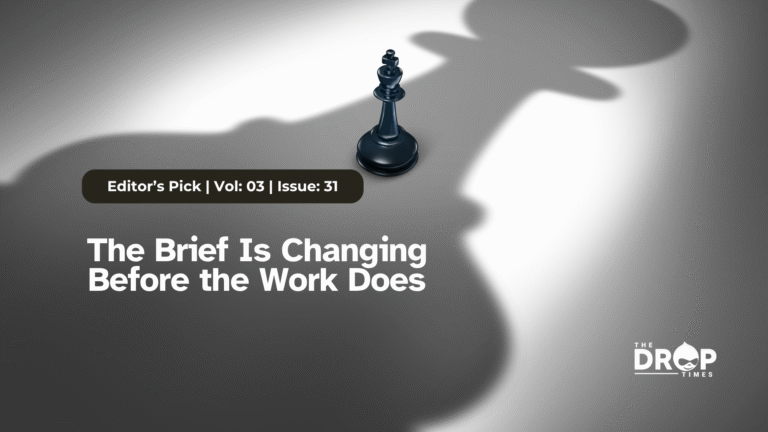When you think about marketing, the last thing that comes to your mind is digital marketing security. While it is obvious, maybe, after all, it isn’t the best thing. We don’t want to scare you or overinflate the importance of cybersecurity. But let us just say that there are 11.5 attacks happening every minute (!). So, maybe (just maybe) now is a great moment to reconsider your attitude towards cybersec.
Implications of Digital Security Risks
Is your business prepared for the potential threats? Does your team know what to watch out for? If the answer is no, no worries! In this guide, we’ll look at the most common threats and share our tips for how you can protect your data, brand credibility, and the overall business.
The amount of data breaches is growing every year, and its costs aren’t declining either. Data breaches happen when malicious actors gain access to sensitive customers’ data. They can then use that to make unauthorized purchases online or steal victims’ identities.
As we’re focusing on digital marketing today, let’s see what phishing can do to your socials. Essentially, attackers can gain access to your accounts to steal your brand name, demand a ransom, post something damaging, or even defraud unsuspecting customers. And you know how it works — even if you recover your account, many customers will still feel unsafe.
- Ruined brand reputation. This is a huge one. Sometimes, businesses suffer from the impact of a cyberattack for many years. Why? Well, we all have our trust issues. And whether you like it or not, your customers might not really trust you the same way they did before the attack.
- Less trust for marketing and PR. Even when you do your marketing, no one wants to work with shady, unsafe sites. So, it’s very important to create a positive reputation for your business. For those who rely on press releases and guest posting to create brand awareness, any credible network of contacts would also only link to secured sites.
- Financial losses. Is this the most obvious one? Probably. In reality, we all might not really understand how expensive the recovery from a cyberattack could be. Check this out — in 2023 alone, businesses lost $12.5 billion (!) to cybercrimes, more than triple the amount lost in 2019. Oh, and don’t forget about litigation costs.
- Downtime. It’s a straightforward one — when your site or network is under attack, you can’t really go on with your daily tasks. You will face some downtime either way. Of course, if you take preventive measures and create a comprehensive backup plan, you can avoid lengthy downtime. Still, it isn’t that easy in practice.
Common Cybersecurity Threats in Digital Marketing
While bots are super useful in marketing, they are also quite handy for cyberattackers. Surprised? An example of a potential scheme is a clicker bot that clicks on your PPC ads, draining your budgets. Not only are hackers using these to essentially steal from you, but they are also distorting your ads analytics data, which can cause you to make bad calls when coming up with your marketing strategy.
Malicious Bots
So, what exactly is cyber security in digital marketing? Typically, it refers to cyber criminals gaining access to your corporate SM accounts, content management systems, and customer data. Attackers can even try to own your brand name and demand a ransom for it. While there are many potential threats, these are the most common ones you should be aware of:
Phishing
Now you know the most common digital marketing threats and how to deal with them. As the saying goes — forewarned is forearmed. That’s why the only thing left for you is to keep those preventive measures in mind and educate your team on the issue. After all, being careful in the online space is one of the best ways to avoid getting into trouble.
Sometimes, the goal of a cyberattack is not to gain access to anything but to shut down a website or disrupt the network. To achieve this, the attackers flood the target site or network with so much traffic that it simply crashes. As a result, legitimate users can’t access the site. This is essentially how DDoS attacks work.
When it comes to this type of threat, your chances of being hit might be higher if you work in one of these industries: banking, retail, gaming, and crypto.
- 64% of victims can’t regain access to their accounts within the first 48 hours, which is enough time for most criminals to cause a lot of damage, not to mention the impact on sales.
- And while it might seem like only big companies become the targets of cybercriminals, 56% of the attacks target small businesses.
Data Breaches
Phishing is one of the most widespread tactics cybercriminals are using. While it is as old as the world itself, it still works. How does this happen? Normally, the attackers use fake emails, sites, or social media accounts to try to trick some unsuspecting employee into revealing sensitive information like login details or credit card information. They can then use this data to gain access to the company’s accounts, platforms, or even the whole network.
If you think having embarrassing pictures of you get leaked is bad enough, wait till you hear of your customer’s sensitive information floating around for anyone to see. Data breaches are so much worse and way more expensive.
Breaches also cost a lot of money to fix. In some cases, the company might have to pay the affected victims some monetary compensation. For example, Texas’s MD Anderson Cancer Center was fined .3 million for not encrypting patients’ records, and that’s not counting the losses incurred during the data breach. Talk about an expensive mistake.
Distributed Denial of Service (DDoS)
And, of course, it isn’t just us saying; here are some stats to prove the seriousness of the situation:
By Alexandra Rumiantseva
How Can Digital Marketers Protect Their Businesses From Cybersecurity Threats?
Now that you know all about the threats and privacy issues in digital marketing, the next logical question is — how can you prevent this from happening? These are the most crucial things to do:
Even if you are somewhere far away from the cybersecurity field, you’ve most likely heard about Storm Worm, the WannaCry ransomware attack, or the NotPetya Virus. Each of those led to huge money and reputational losses. If you still think that digital security risks aren’t real, let’s think about that again. So, what are the things you can expect if you neglect cybersecurity best practices?
- How to build a website with WordPress and what are the best plugins to use: Building a website with WordPress is an excellent choice due to its versatility, ease of use, and a vast array of plugins that enhance functionality. Here’s a comprehensive guide to building a WordPress website, along with recommendations for the best plugins.
- What does this property buzzword mean and how does it actually work? Gearing simply means borrowing money to buy an asset. Negative gearing can be a tax strategy used by investors and describes when the income (ie, the rent) made from an investment is less than the expenses it incurs, meaning it’s making a loss.
- How to Sell Your Ecommerce Business for the Best Value: Selling an ecommerce business can be a very profitable move. You can use the proceeds to invest in other projects, launch new ecommerce business websites, or even retire. For some startups, selling the business is the end goal. Whether you have a dropshipping website, sell with Amazon FBA, or own a large-scale ecommerce business, there’s an opportunity for you to sell.
- Comprehensive Guide to WordPress Website Development: Developing a WordPress website is a sequential process that requires careful planning, thoughtful execution, and consistent maintenance to ensure it meets the needs of users and achieves its intended goals. This involves a series of clearly defined stages, including planning, designing, content creation, optimisation, and ongoing maintenance.
- Top 10 High-Paying Jobs AI Won’t Replace in 2025: Artificial Intelligence (AI) is revolutionizing industries, automating repetitive tasks, and reshaping the global workforce. Despite its remarkable advancements, certain professions remain beyond AI’s capabilities due to their reliance on uniquely human traits like creativity, empathy, and critical thinking. This case study explores the 10 highest-paying, fastest-growing jobs in 2025 that AI won’t replace, delving into why these roles are indispensable and how they are evolving in an AI-driven world.
- Spill Your Guts: What To Wear To Olivia Rodrigo’s Australian Tour: Never afraid of screaming out all the dark, embarrassing things we’ve all thought before, Rodrigo sings about comparing herself to her boyfriend’s ex-girlfriend. If you want an edgy outfit that mimics the music…
- Top Social Media Plugins for WordPress to Increase Your Sites Reach and Engagement: If you are seeking to enhance your website’s reach and engagement on social media, you have come to the right place. In this article, we will delve into the premier social media plugins tailored for WordPress users. From Social Warfare to Jetpack, these plugins can facilitate seamless sharing of your content across diverse social platforms.Furthermore, we will provide recommendations to optimize your website’s visibility on social media. Keep an eye out for valuable insights!
- How to Change PuTTY’s Appearance: PuTTY is a widely-used SSH and telnet client for Windows and Linux hosting. While its default appearance is functional, you can customise it to improve aesthetics and usability. Below are the steps to modify PuTTY’s appearance, including changing the font, window size, colours, and cursor options.
- What programming languages does vBulletin use?: vBulletin was orginally written in perl and used a flat file database system. However, as sites grew they notice that sites could not cope with a large amounts of traffic. This problem has now been fully rectified when vBulletin was converted to php and a mysql database system.
Source: Deloitte
- Use strong passwords and MFA. This is important for your corporate email, website login details, social media accounts, etc. Make it obligatory for all employees to use 2FA and set up automatic, regular password updates.
- Choose reliable hosting. If you are sure of your hosting provider, great! But if you feel like it isn’t the safest option, remember that there are others with better security. So, do your research and choose wisely. Yes, it sounds boring, but it can save you a ton of stress.
- Encrypt all sensitive data. Encryption is one of those great solutions that make everything safer. Whatever you do, you have to make sure that no third party can read sensitive customer information, even if they access it somehow.
- Become a bit of a cybersec geek (or hire one). Look — we don’t know your business, so we can’t suggest what the best setup for you is. Yet, any cybersec expert will tell you one thing — monitor your environment. It can also be helpful to read some news and see whether your industry is being targeted. Plus, always use patches and update everything regularly.
- Educate your employees about cybersecurity risks. Your team has to know how to spot phishing attacks and what to do if this happens. One tip, though — if you want this to work, try to make your training actually interesting. If it is one of those Zoom calls where everyone is snoozing, your business won’t get more protected.
- Ensure you have a plan for disaster recovery in place. Even if you are hyper-conscious, things still happen. So, just in case, be prepared. Back up your data and have a clear document that explains what to do in case of an attack.
Source: Hive Systems





